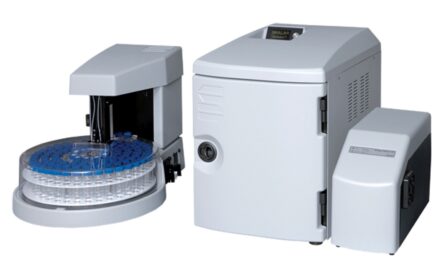Growing Threat of Rogue Drones
As drone technology becomes more accessible and affordable, the number of recreational and commercial drones in our skies has increased significantly in recent years. However, the lack of proper regulation surrounding drone usage means there is also a growing threat from rogue drones that could pose risks to privacy, property, or public safety. Several high-profile incidents around the world have highlighted how drones can be used to spy on people, disrupt airports and other infrastructure, or even conduct acts of violence from the air. With drones that are increasingly more autonomous and carry higher payloads, the dangers will only increase if strong rules are not put in place.
Rise in Privacy and Safety Complaints
Complaints about Anti-Drone invading personal privacy or disrupting activities have risen sharply as casual drone use has become more widespread. Incidents of drones filming into private homes, backyards and even through windows have raised serious privacy concerns. Drones have also disrupted outdoor events, accident scenes, and wildlife in sensitive areas. Large public gatherings and sporting events now routinely deal with rogue drones flying overhead in prohibited airspace. The risk of a drone crashing into a crowd or important infrastructure like power lines is a real threat that safety regulators are struggling to address. While many drone operators may not have malicious intent, the lack of accountability allows such unsafe and invasive behaviors to continue without repercussions.
Counter- Anti-Drone Technology Comes of Age
In response to the threat posed by rogue drones, counter-drone technology designed to detect, track and mitigate unauthorized or dangerous drones is rapidly developing. Several systems use radio frequency detection methods to identify the unique control signals between a drone and its operator, allowing authorities to locate the source. Others rely on optical sensors that can visually identify drones and observe their flight path from a distance. More advanced counter-drone weapons like jamming devices, interceptor drones, and laser weapons are also being deployed by military and law enforcement to disable rogue drones without damaging property or risking injury on the ground. As counter-drone tools become smaller, mobile and more affordable, authorities now have effective options for responding swiftly to active security threats. However, concerns remain about collateral interference with authorized drone operations or unintended consequences from some countermeasures. Careful regulation and policy are still needed as this new domain of warfare evolves.
Stricter Drone Laws Now in Place
Many countries have introduced or updated regulations in recent years to improve enforcement against unsafe, unauthorized or illegal drone activity. Most notable in the United States was the FAA Reauthorization Act passed in 2018, which established stronger federal oversight of the booming drone industry. Key provisions included remote identification requirements so that law enforcement can track operators, flight restrictions around sensitive facilities like airports and prisons, and minimum operator age limits. Failure to comply with new rules can lead to hefty fines or imprisonment. Similar height, registration and operational restrictions have been imposed in the European Union and many other regions to better manage airspace usage. While not eliminating all risks, stricter laws now provide authorities with clearer guidelines to deal with rogue drones and prosecute reckless behavior.
Ongoing Challenges of Unregulated Imports
A major ongoing challenge is the rise of cheap, unregulated anti-drone imports that do not meet established safety or identification standards. Lower priced models sourced from overseas online retailers are difficult for authorities to track and are more likely to be flown illegally without proper oversight. Many operators of imported drones may also be unaware or unconcerned with local laws governing airspace use. Rogue flights that endanger critical facilities or disrupt emergency response efforts often involve drones flown by casual users unfamiliar with regulations. Stepping up customs inspections and imposing tariffs on undisclosed drone imports could help address this problem. However, completely stemming the tide will require coordinated international cooperation and policy alignment regarding minimum import standards and operator rules across borders.
Growing Role for AI in Drone Management
AI-based solutions are increasingly seen as critical tools to help address the rising problems of unauthorized drone use at scale. Advanced machine learning algorithms can now automatically identify drones from aerial imagery with human-level accuracy to monitor airspace activity. AI is also able to track flight paths, recognize registration markings, and even distinguish between permitted commercial drones versus private recreational models in real-time. When paired with data analytics, suspicious activity patterns can be detected and authorities alerted more efficiently than relying solely on human monitoring. Drone manufacturers are also developing self-flying technologies using AI to allow programmed ‘no fly zones’ that prevent unauthorized access digitally without needing active interference. As these capabilities advance further, AI will play a key role in intelligently managing the complex challenge of ensuring public safety amid expanding drone operations worldwide.
while anti-drone technology enables many economic and social benefits, the rise of unsafe and illicit drone activity poses real and growing threats that governments must address through comprehensive regulation, enforcement, and counter-drone capabilities. Stricter laws and border policies have helped curb some risks but unregulated imports and lack of accountability for minor infractions continue enabling rogue flight incidents. Emerging AI solutions show promise for assisting the scalable management and oversight of airspaces in the future. With balanced policies and coordinated international cooperation, the risks of criminal or unintentionally dangerous drone misuse can be better mitigated as this transformative industry continues to evolve rapidly in the coming years. The safety and well-being of communities must remain the utmost priority amid the expansion of personal aerial vehicles into uncontrolled public domains.
*Note:
1. Source: Coherent Market Insights, Public Source, Desk Research
2. We have leveraged AI tools to mine information and compile it.




